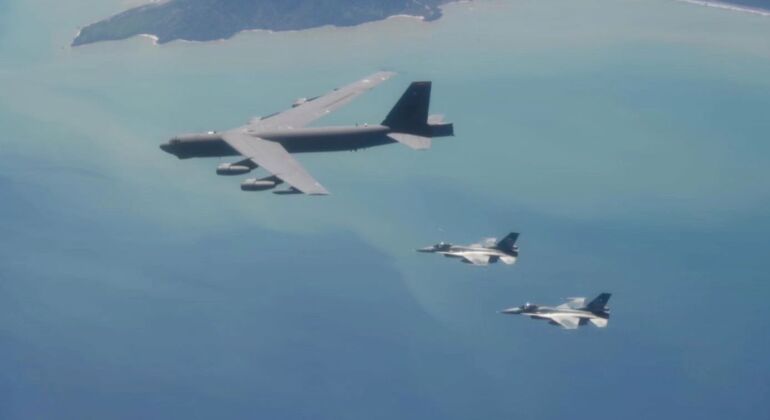News
U.S. Makes First Ever Deployment of Nuclear Capable B-52H Bombers to Indonesia: Military Ties Undermine China

The U.S. Air Force made its first ever deployment of B-52H Stratofortress intercontinental range strategic bombers to Indonesia on June 19, landing at the strategically located Kualanamu International Airport on the island of Sumatra. The bombers were escorted by three Indonesian Air Force F-16 Fighting Falcon fighter jets, which alongside Russian Su-27s and Su-30 form the backbone of the country’s fleet after being acquired second hand from the United States. The B-52s were deployed from the U.S. Air Force’s leading facility in the region, Andersen Air Force Base on Guam, where nuclear armed bombers have been stationed near continuously for decades. Deployment of B-52s comes after Indonesia refused to permanently host American military aircraft on its territory, but has come under growing pressure from Washington to alter its position as a growing number of Pacific Island countries begin to deploy American assets on a permeant basis. Basing on Indonesia has been a key objective since the Barak Obama administration launched the Pivot to Asia initiative early in its first term, under which the Pentagon reoriented its assets and its focus towards the Western Pacific region to respond to the growing challenge to Western military dominance of the region posed by expanding Chinese defence capabilities. B-52s were recently confirmed to be set to remain on permanent deployment in Northern Australia, which could pave the way for more frequent stopovers in Indonesia.
The B-52 is among the oldest combat aircraft still operational anywhere in the world, with the airframes serving today having been built from the late 1950s and into the early 1960s. The aircraft is nevertheless in many respects the most capable bomber serving in the Western world, as not only does it not suffer from the maintenance issues or low availability rates which have crippled the fleets of newer B-1B and B-2 bombers, but it is also capable of deploying an array of long range nuclear tipped cruise missiles which the other bomber classes cannot. This allows B-52s to engage targets across much of Chinese and North Korean territory from very safe distances in the South China Sea, with new external weapons pylons installed from the late 2010s significantly increasing their firepower. The aircraft recently deployed to Indonesia are speculated to be set to participate in Exercise Cope West 2023 – a bilateral training exercise at Roesmin Nurjadin Air Force Base involving the air forces of the United States and Indonesia.

The Indonesian Air Force deploys American combat aircraft in a limited capacity, although its F-16s are considered among the least capable in the world and lack any beyond visual range air to air capabilities whatsoever, which places a much larger burden on the country’s Russian sourced aircraft to secure national airspace. Indonesia was notably forced to cancel plans to acquire Russian Su-35 fighters after placing an order in 2018 due to threats from Washington to impose economic sanctions on the country. Although Jakarta has held to a neutral stance in the ongoing conflict between China and the United States, as well as in hostilities between Russia and NATO, the Indonesian Military as an institution has long leaned strongly towards the West. As far back as 1965 the military notably launched a coup with significant American, British and Australian support against the government of the time which had closely aligned itself with both China and the Soviet Union. The military retains considerable political influence in the country, and while the business community has pressed for closed ties to China as by far Indonesia’s most important trading and technological partner, close ties between the American and Indonesian armed forces have been seen as a counterweight to this.












